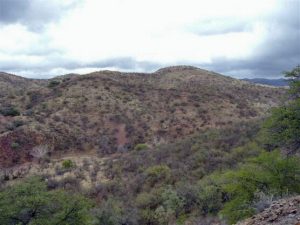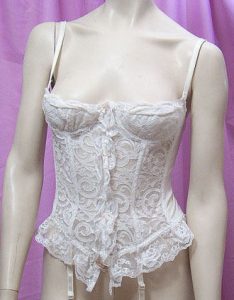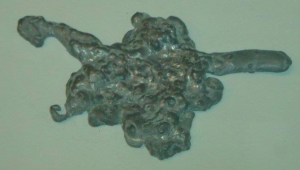 Arizona is a Basque word. It seems that it wasn’t that long ago that this seemed a fringe hypothesis, but now it appears on the National Park Service’s page. The state of Arizona gets its name from a ranch from the 1700s where silver was discovered. The name of that ranch, which still exists, is Arizona. It seems to have been named by Bernardo de Urrea and means “haritz ona” or “the good oak”. The original theory that Arizona might be a Basque word was proposed by William A Douglass, of the University of Nevada, Reno’s Center for Basque Studies, in 1979. It now seems to be a well accepted idea.
Arizona is a Basque word. It seems that it wasn’t that long ago that this seemed a fringe hypothesis, but now it appears on the National Park Service’s page. The state of Arizona gets its name from a ranch from the 1700s where silver was discovered. The name of that ranch, which still exists, is Arizona. It seems to have been named by Bernardo de Urrea and means “haritz ona” or “the good oak”. The original theory that Arizona might be a Basque word was proposed by William A Douglass, of the University of Nevada, Reno’s Center for Basque Studies, in 1979. It now seems to be a well accepted idea.
 That piece of lingerie, the basque, is named after traditional Basque costume. You have to be careful what you search for. If you enter the word “basque” into Google, you might not quite get what you expected. Your browser window might be filled with pictures of lingerie. What is now known as a basque was inspired by the traditional costume of Basque women (at least according to Wikipedia). The French were early adopters/adapters of the piece of clothing, but it spread from there to the rest of Western world.
That piece of lingerie, the basque, is named after traditional Basque costume. You have to be careful what you search for. If you enter the word “basque” into Google, you might not quite get what you expected. Your browser window might be filled with pictures of lingerie. What is now known as a basque was inspired by the traditional costume of Basque women (at least according to Wikipedia). The French were early adopters/adapters of the piece of clothing, but it spread from there to the rest of Western world.
 Molybdomancy is telling the future using molten lead. And it used to be practiced in the Basque Country. I stumbled on this curious word (and even more curious practice) on the Tumblr beautiful-basque-country. It seems that many cultures have the practice of dropping bits of molten lead into water and then divining the future from the shapes that are formed. In Bermeo, this was used to protect ships from bad luck (all I could find about this is this photo on a Facebook page…). Anyone know anything more about this?
Molybdomancy is telling the future using molten lead. And it used to be practiced in the Basque Country. I stumbled on this curious word (and even more curious practice) on the Tumblr beautiful-basque-country. It seems that many cultures have the practice of dropping bits of molten lead into water and then divining the future from the shapes that are formed. In Bermeo, this was used to protect ships from bad luck (all I could find about this is this photo on a Facebook page…). Anyone know anything more about this?
Discover more from Buber's Basque Page
Subscribe to get the latest posts sent to your email.


anitz askere
Basque French lingerie!
This is what the Larousse Menager said. ( Basque, confection): Partie du vetement qui, partant de la taille, recouvre les hanches.
(apparel)A part of a garment that, from the waist down, covers the hips.
It goes on to say that it can be mobil or attached, etc.
The last sentence is: Les vetements masculing ont aussi des basques. Basques are also found on men’s garments.
Say, Buber, how about another search on Wicked pedia!!
Monique,
PS: no offense taken or given–all in fun!
Kaixo Monique, and eskerrik asko! Where did you find that? I couldn’t find those details. And no offense at all 🙂
I found it in the book mentioned–” Larousse Menager” with accent on the first e. The book was published in 1955. It is a sort of household encyclopedia–learning how to cook a gook lamb stew to installing a furnace.
If you want to, I could make you a copy of the page and fax it to you.
In my opinion, the reference to the word ‘basque” associated with men’s clothing must date back to the early 1900’s when men wore jackets cinched at the waist but with a longer panel. Munch later, women wore suits cinched at the waist, thus the word “basque” associated with clothing was more popular.
I never heard the word basque associated with lingerie–leave it to wicked pedia! but I bet that it will be a popular word again with your readears!! As of today, the Espelette pepper lost its place as the hottest thing coming out of the Basque country!!
Cheers
Monique
Monique, if you search Google Images for “basque” much of what you will find is lingerie. It isn’t just Wikipedia. 🙂
Thanks for all of the extra information! I really appreciate it.
Well, you see, Buber, I am a wicked old lady and I am going to buy myself one of those basque.
Seriously, Google and Wickipedia have a place in doing research but as a retired archivist of the Center for Southwest Research at the University of New Mexico I am used to manuscripts collection, rare books, media once in a while. Your post amused me and piqued my interest as I knew that there was another meaning and explanation to the word basque as used in the context of the posted apparel
So, after I buy my basque, I will consider a second carreer at the Folies Bergeres.
Cheers,
Monique
One more comment about the word “basque” as ornament or clothing.
Google Musee d’Arudy Maison d’Ossau. find ” tras los montes” –it will take you to the Spanish province of Aragon, la Huesca, Jaca, etc.
Clik on coutumes feminine –there are only 2 links to click on so you cannot miss it. It is in French but for the names of the dresses are in Spanish. There is an interesting word. Basquina, with the tilde on n,of course.
Google the word Basquina, the first link is a Painting of Goya, …mantilla y Basquina. The photo does not show the Basquina well but there is an explanation as to what it is. Few more links down, there is a good photo of a girl in a blue dress wearing a Basquina.
I may be that the style was adopted by the French and from the waist on down to cover the hip was named ‘basque”
Let’s not forget that between wars and skirmishes between Spain and France, there was always commerce, exchanges of ideas, etc and the border was only a minor inconvenience. It was always fluid and porous. Today, even more so. When I am in Cambo les bains, I buy my Izarra after dinner drink at the Spanish venta because it is cheaper. So do all the French tourists debarking from the huge busses.
Over and out. It was fun–keep up the good work
Cheers,
Monique
Arizona is a Baque-Armenian word. And the connection between Basque and Armenian is prehistoric.
Hahaha !